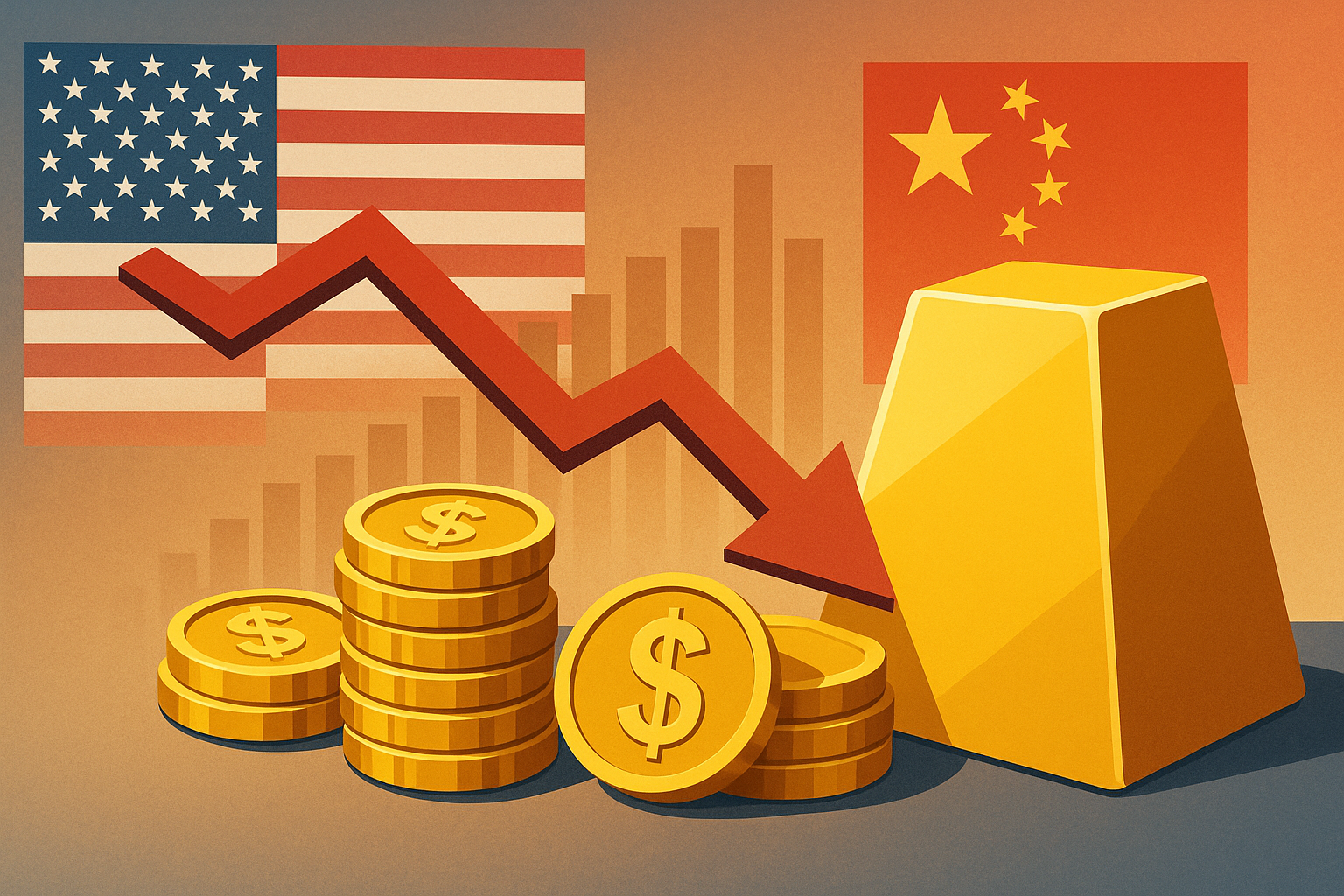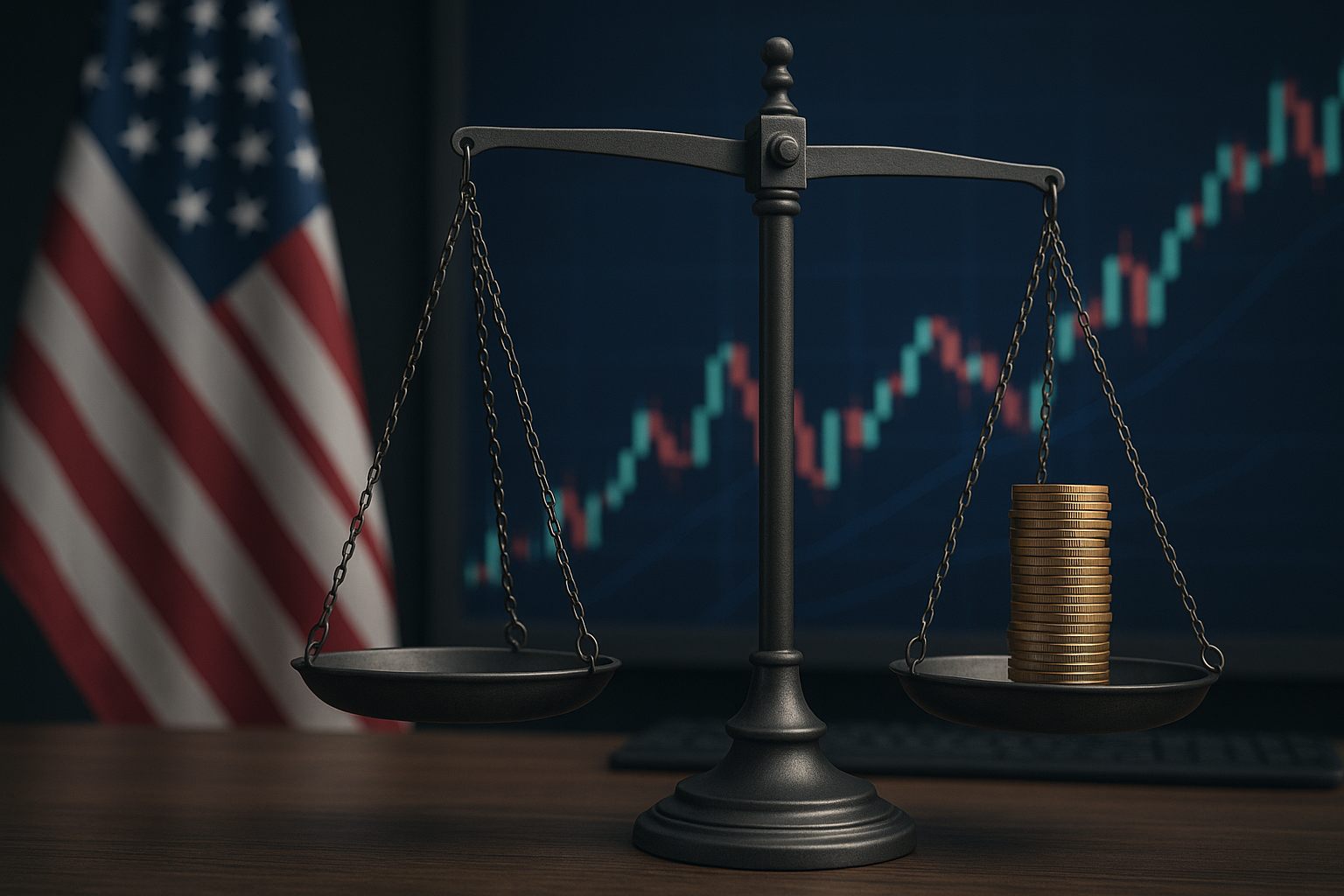Gold Retreats as Trade Rhetoric Softens: What It Means for Investors
In a market that has been hypersensitive to geopolitical developments, even subtle shifts in diplomatic tone can move commodity prices. That’s precisely what happened this week, as gold prices pulled back in response to President Trump’s softened rhetoric on China tariffs. The easing of trade threats has temporarily reduced investor anxiety, prompting a modest sell-off in gold — long considered the ultimate safe-haven asset.
According to Reuters, the price of gold fell by approximately 1.3% following comments from the President suggesting a potential reduction or delay in tariffs on Chinese imports. This sign of de-escalation has been interpreted by markets as a step toward more stable U.S.-China trade relations — at least for now.
The Role of Gold in Uncertain Markets
Historically, gold has served as a reliable hedge against political instability, inflation, and currency fluctuations. In recent years, with central banks around the world embracing looser monetary policies and geopolitical conflicts flaring intermittently, demand for gold has surged. In 2024, gold reached a record high of over $2,200 per ounce during a peak in U.S.-China tensions and global economic uncertainty.
However, with a more conciliatory tone from Washington, short-term demand appears to be softening. The U.S. dollar has strengthened slightly on the back of this news, further pressuring gold prices downward. Analysts at Citi have noted that “any sustained improvement in global trade relations is likely to curb appetite for gold in the near term, though long-term fundamentals remain intact.”
Why This Matters for Investors
- Safe-Haven Rotation: As tensions ease, capital may rotate from defensive assets like gold into riskier, growth-oriented investments — particularly equities and emerging markets.
- Inflation Monitoring: While geopolitical risk is easing, inflationary pressures remain. Investors should not fully divest from gold but may consider trimming exposure if peace holds.
- Policy Watch: With U.S. elections approaching and potential shifts in foreign policy on the horizon, any reversal in tone could quickly swing sentiment back in favor of gold.
Future Trends to Watch
- Central Bank Activity: Many central banks, particularly in emerging economies, continue to buy gold as a reserve diversification strategy. Watch their moves for medium-term demand indicators.
- Geopolitical Flashpoints: Beyond China, tensions in the Middle East, Taiwan, and Eastern Europe remain potential catalysts for gold rallies.
- Digital Gold Alternatives: With the rise of tokenized gold and crypto-backed assets, some investor capital may shift toward more flexible gold exposure mechanisms.
Key Investment Insight
The current dip in gold prices may be more of a pause than a pivot. Investors should view this not as a signal to exit gold completely, but rather as an opportunity to rebalance. Consider layering in broader commodity exposure or diversifying with gold-related equities, such as miners with low extraction costs or companies hedging against currency risk.
Stay Ahead with MoneyNews.Today
Markets move quickly, and so do the headlines that shape them. Stay with MoneyNews.Today for timely, expert-backed insights on how global developments impact your investments — from commodity cycles to tech disruptions and everything in between.





